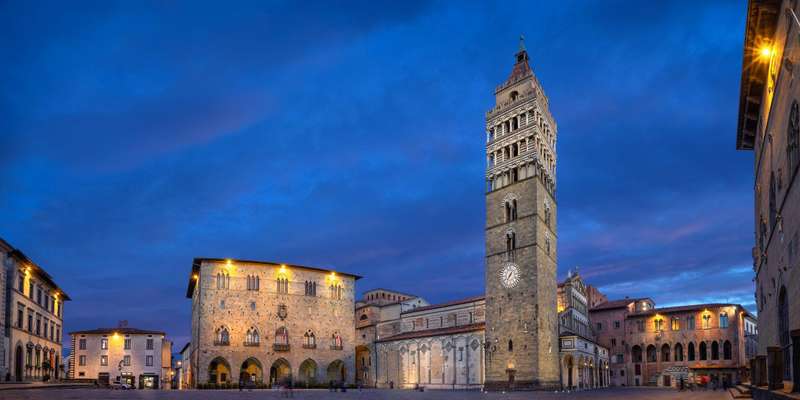- Home
- Useful Tips
- Pistoia's lesser-known...
Most travelers to Tuscany overlook Pistoia's extraordinary Renaissance treasures, missing masterpieces that rival Florence's crowded galleries. Over 80% of visitors spend less than two hours here, unaware that the city holds fresco cycles by Masolino and della Robbia terracottas hidden in plain sight. The frustration of battling crowds while missing authentic artistic experiences leaves many feeling they've seen only a fraction of Italy's cultural wealth. Unlike major tourist hubs, Pistoia's intimate chapels and civic museums offer rare opportunities to study delicate brushwork up close, without timed tickets or jostling viewfinders. This quiet city preserves the Renaissance's spiritual dimension through works created for contemplation rather than mass consumption.


Why most visitors miss Pistoia's artistic highlights
The compact historic center conceals its greatest artworks in unexpected places – a hospital chapel here, a cathedral sacristy there. Unlike Florence's signposted masterpieces, Pistoia's 15th-century frescoes require local knowledge to locate. Many travelers follow generic 'Tuscany day trip' itineraries that prioritize quick photo ops over meaningful encounters, unaware that the Ospedale del Ceppo's ceramic frieze represents della Robbia's workshop at its peak. Even art-focused visitors often overlook the Cathedral's silver altar, a Gothic-Renaissance hybrid requiring special access. These oversights happen because regional tourism materials disproportionately promote better-known cities, leaving Pistoia's cultural depth under-explained.
How to find the city's most breathtaking fresco cycles
Start at Sant'Andrea Church where Giovanni da Ponte's Annunciation fresco hides above the entrance – tilt your head upward to spot the delicate gold leaf details most miss. The nearby San Giovanni Fuorcivitas reveals its stunning Filippo Lippi-influenced pulpit only when natural light floods the nave around midday. For a truly exclusive experience, inquire about visiting the Battistero's upper loggia, where restoration reveals Masaccio-contemporary fresco fragments. These works reward those who move slowly; bring binoculars to study brushwork that digital reproductions flatten. Remember many sites close for midday riposo, so plan morning or late afternoon visits when custodians often share stories.
Where to stay for optimal art exploration
Choosing accommodation within Pistoia's ancient walls puts you steps from morning viewings before tour groups arrive. Historic palazzos near Piazza del Duomo offer atmospheric stays, with several featuring original Renaissance architectural details. For budget-conscious travelers, convents-turned-guesthouses provide simple rooms with direct access to lesser-known chapels. Avoid outlying hotels requiring drives – parking restrictions complicate spontaneous visits when you discover a temporary exhibition or unexpected opening. The ideal base allows evening strolls past illuminated facades when churches cast golden light on their own artworks.
Local secrets for experiencing the art like an insider
Pistoians cherish their artistic heritage but rarely advertise it. Strike up conversations at cafés near San Bartolomeo in Pantano – regulars might mention which restorations are currently visible. Time your visit to coincide with the Giostra dell'Orso festival, when palaces open private collections. For deeper understanding, attend a choir performance in San Leone where acoustics enhance the Renaissance architecture. The tourist office offers free maps marking artwork lighting conditions – essential for photography without flash. These unpublicized opportunities transform standard sightseeing into personal encounters with the Renaissance spirit.
